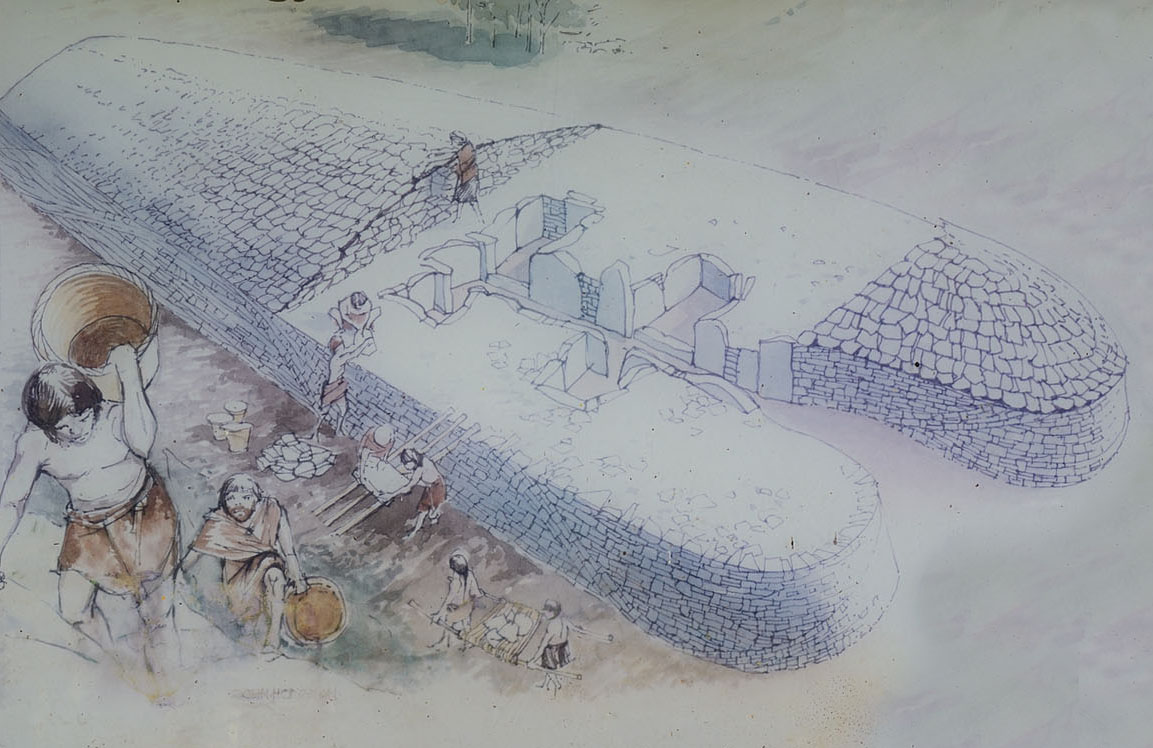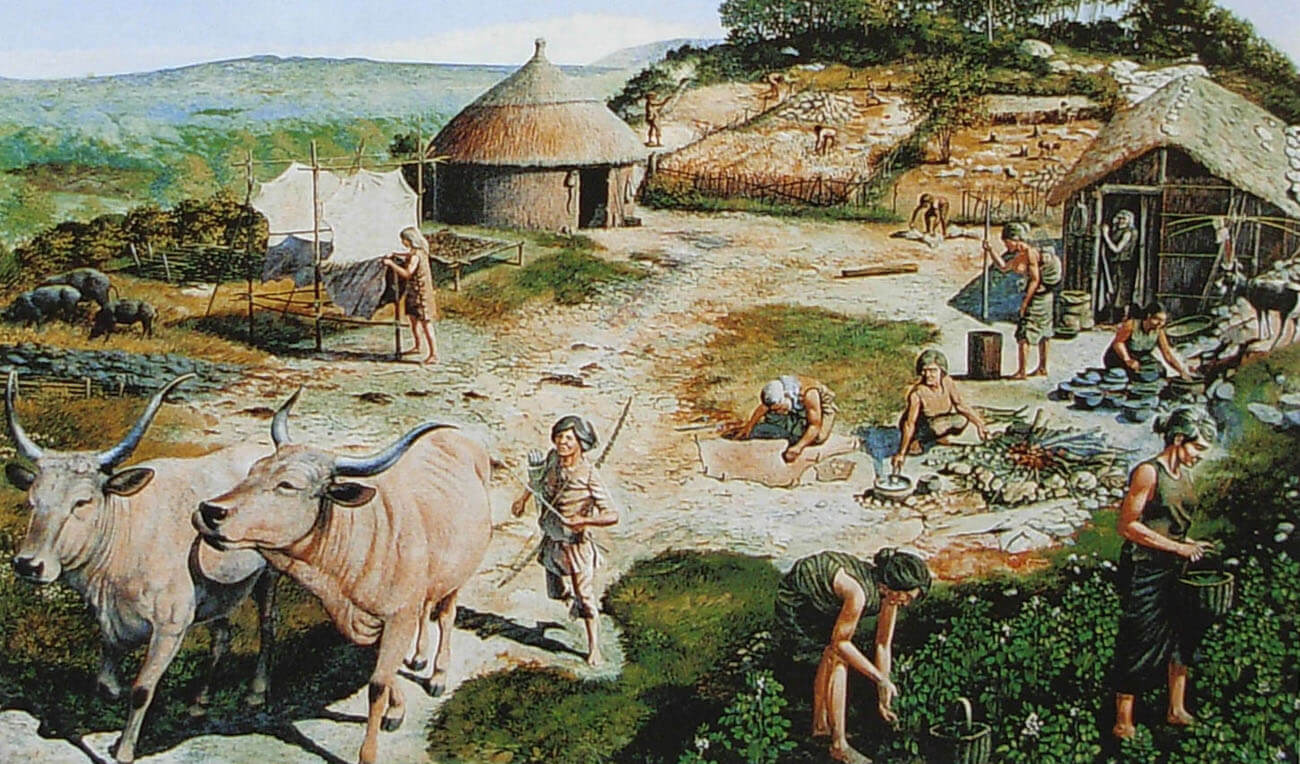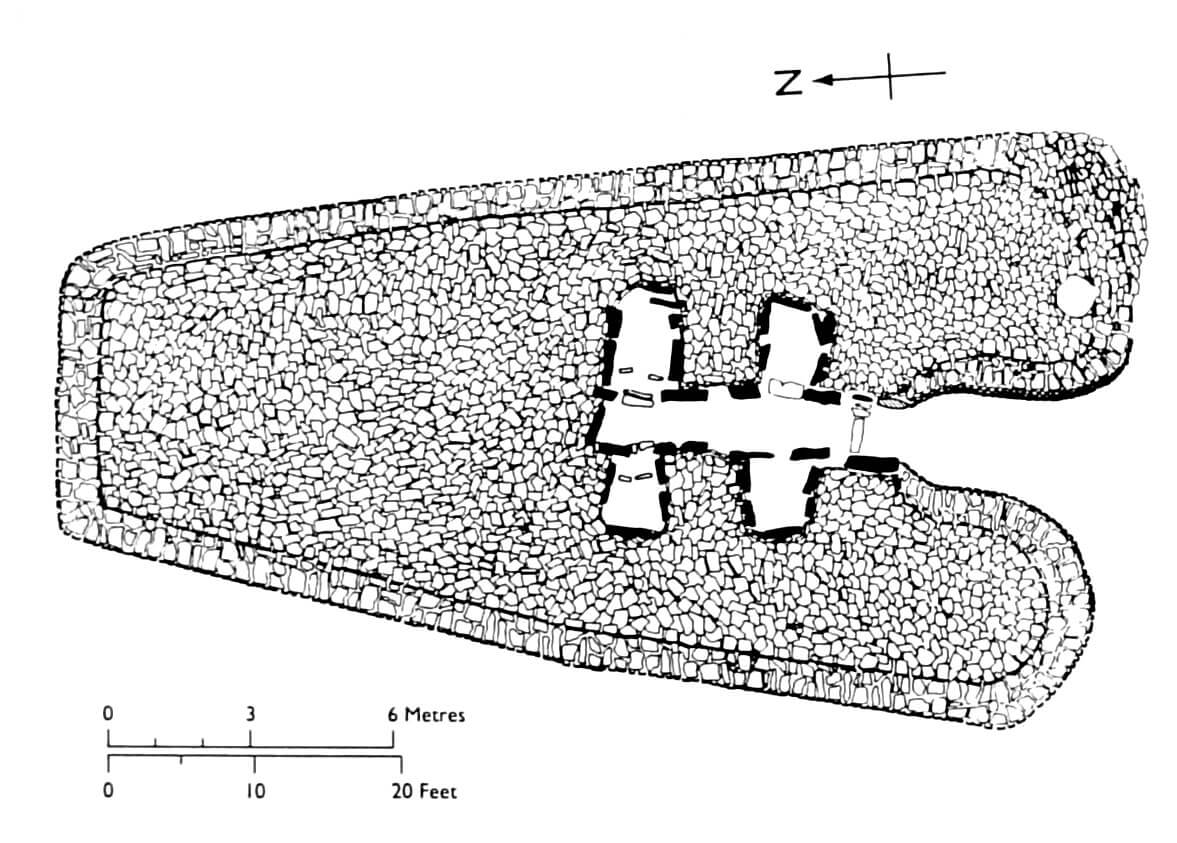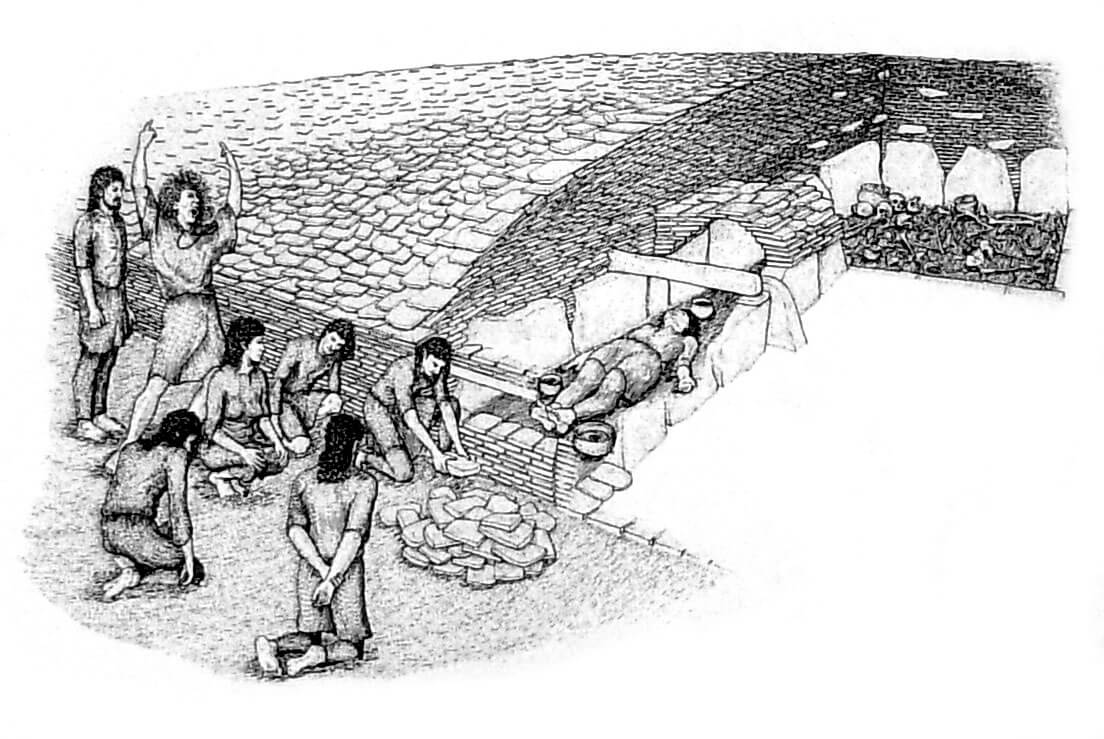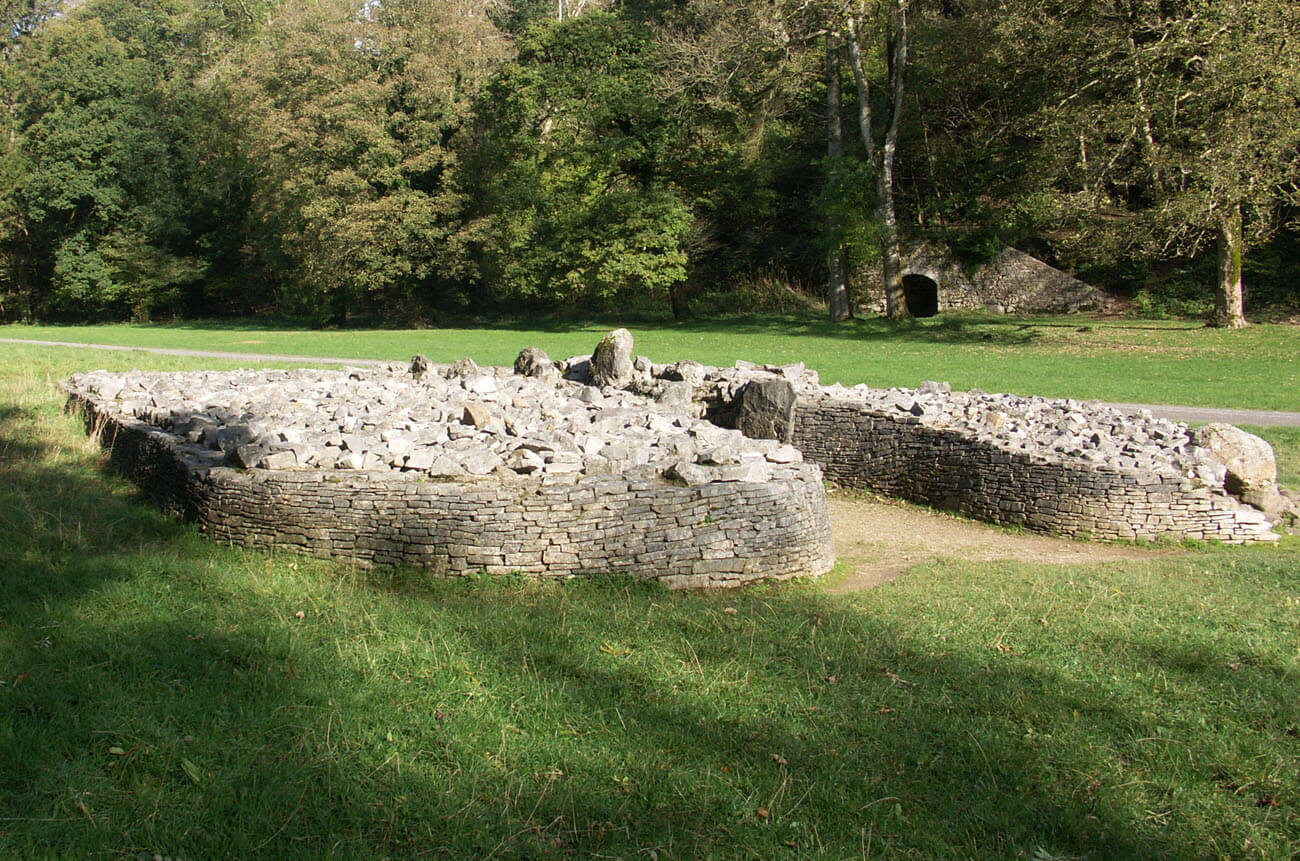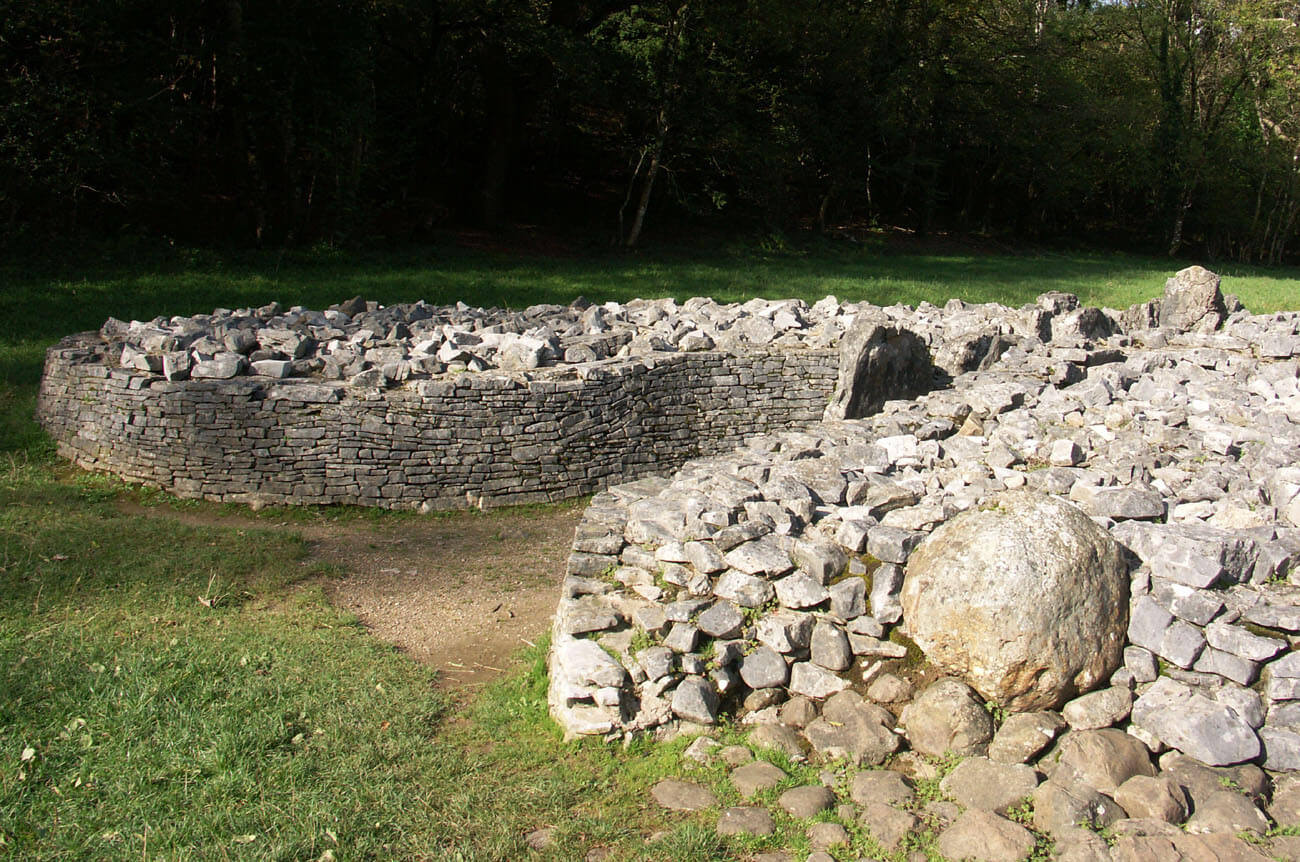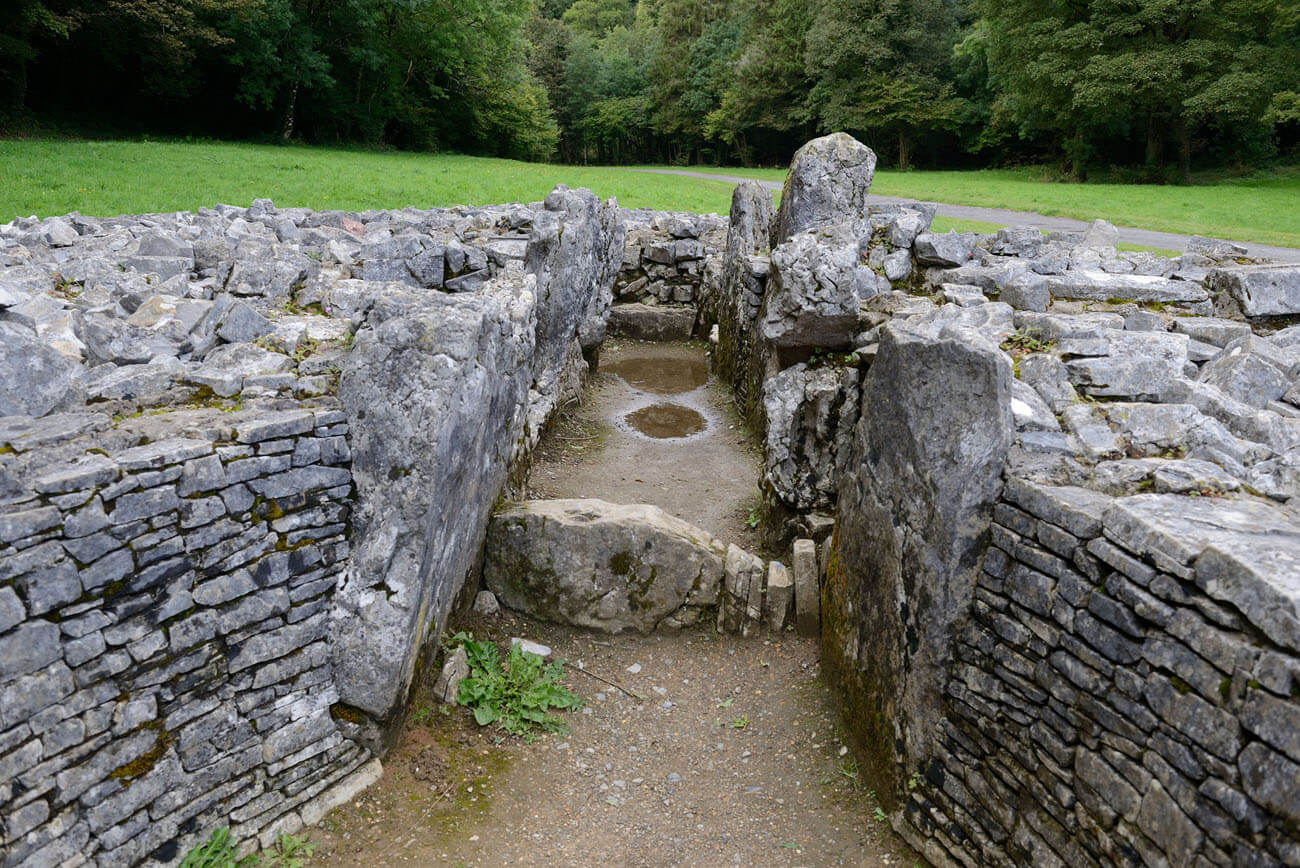History
The tomb in Parc le Breos was built in the younger Neolithic period, around 3800 – 3500 BC (bones found in the tomb were dated for this period) and it was used for several hundred years. It was connected with the change of lifestyle in north-western Europe and the transition from a nomadic hunter-gatherer to a settled farmer. It probably influenced the development of a sense of territoriality and inheritance rights, and thus the desire to pay tribute to ancestors. A visible manifestation of this aspiration could be monumental tombs, also used to carry out religious ceremonies in their vicinity. The decline in the use of megalithic tombs took place around 2500 BC, when other methods of burial began to gain importance. The tomb was discovered in 1869 by workers working on road construction.
Architecture
The tomb was erected in a shape similar to a wedge, about 22 meters long, 12 meters wide on the south side and 6 meters wide on the north side. The entrance to the burial chamber was on the south side, between the two bulges separating the kind of a small yard approximately 2 meters wide. This square was probably the place of the ceremonies, as fragments of burnt bones, pottery and arrowheads were found there.
The outer walls of the tomb up to a height of about 60 cm were revetted with stones of similar size, laid without mortar. Along this wall at a distance of about 75-80 cm deep in the tomb was another wall intended to protect the structure from the pressure of the cairn. The gap between both walls was filled with limestones, arranged more or less horizontally. A similar debris, mixed with earth, filled the inside of the tomb, probably heaping it to a height of about 1.5-2 meters.
Inside the cairn, a central passage, 6 meters long and 1 meter wide, led north, and on its eastern and western sides there were two chambers measuring approximately 1.6 x 1 meter. The passage and chambers were lined on the sides with large stone slabs, 15 to 35 cm thick, with smaller dry stones filling the irregular spaces between them. Large stone slabs probably also served as a ceiling. The height of the passage was probably 1 to 1.5 meters. The slightly lower chambers were entered via low sill stones placed in the gaps between the side stones of the passage. The south-west chamber did not have a sill, and the northern ones had additional ones placed at a distance of about 0.5 meters. A 0.3 meter high sill stone, placed 1 meter from the courtyard, also had an entrance to the main passage.
In the lateral chambers, human remains of over forty men, women and children were stored. Some of them were cremated, while some of them have traces of exposure to weather conditions, which indicates the temporary display of corpses in front of the tomb, before they were buried. The cremated remains were placed only in the south-eastern chamber, where men and women were placed, as well as all age groups. The south-eastern chamber was also unusual, because it contained almost three times as many people as in each of the other chambers. Bone fragments were also found in the central passage, but they were stored there long after the lateral chambers were no longer used. Animal bones have also been found, including dogs, cats, deer, pigs, sheep and cattle.
Current state
Currently, the top layer of the tomb (cairn) has disappeared, but its lower part was reconstructed in 1960-1961 (groundwater damaged especially the north-eastern and south-eastern corners). The preserved passage and four burial chambers with the side stones forming them, as well as the lower part of the tomb, allowing one to visualize its size. The monument is open to visitors for free at any time of the day.
bibliography:
Castleden R., Neolithic Britain: New Stone Age sites of England, Scotland and Wales, London 1992.
The Royal Commission on Ancient and Historical Monuments in Wales, An Inventory of the Ancient Monuments in Glamorgan, Volume I: Pre-Norman, Part I, The Stone and Bronze Ages, London 1976.
Williams D., Gower. A Guide to Ancient and Historic Monuments of the Gower Peninsula, Cardiff 1998.

